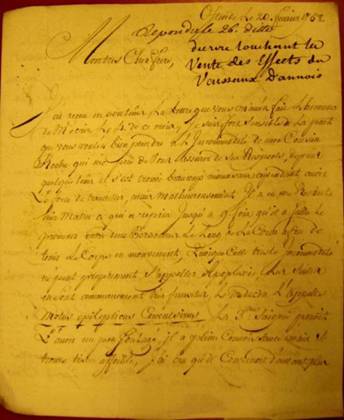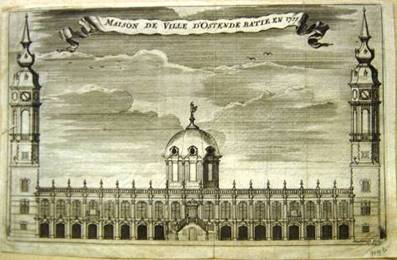|
Secondary Navigation
History
English
Irish
|
Irish Mercantile Networks in the Low Countries
Veerle Delahaye
• Introduction • Sources • Archives • Bibliography •
 The scope of the research is limited to the Low Countries . In regard to contemporary Belgium , the General State Archives in Brussels and the local departments in the provinces have been visited. Furthermore, the city archives of Ghent , Antwerp , Bruges and Brussels are also part of the search area. The university library of Ghent and the archives of the famous printer-family Plantijn-Moretus contained relevant material as well. Concerning The Netherlands, the communal archives of Amsterdam , Rotterdam and Flushing , the Zealand archives and the NEHA have been browsed. Concerning the Zealand archives, one has to mention that only the archives of the city of Veere are relevant for the MERNET-research. Since Dunkirk belonged to Flanders untill 1662, archival material that could be found concerning this town had to be included in the database as well. Furthermore, economic ties between Dunkirk and Flemish cities remained strong until the end of the 18 th century. Apart from the traditional economic activities, Dunkirk and Ostend were notorious for their profitable privateering business in which Irishmen took part from the middle of the 17 th C. onwards. The scope of the research is limited to the Low Countries . In regard to contemporary Belgium , the General State Archives in Brussels and the local departments in the provinces have been visited. Furthermore, the city archives of Ghent , Antwerp , Bruges and Brussels are also part of the search area. The university library of Ghent and the archives of the famous printer-family Plantijn-Moretus contained relevant material as well. Concerning The Netherlands, the communal archives of Amsterdam , Rotterdam and Flushing , the Zealand archives and the NEHA have been browsed. Concerning the Zealand archives, one has to mention that only the archives of the city of Veere are relevant for the MERNET-research. Since Dunkirk belonged to Flanders untill 1662, archival material that could be found concerning this town had to be included in the database as well. Furthermore, economic ties between Dunkirk and Flemish cities remained strong until the end of the 18 th century. Apart from the traditional economic activities, Dunkirk and Ostend were notorious for their profitable privateering business in which Irishmen took part from the middle of the 17 th C. onwards.
The first type of source that contains information about Irish merchants are burgherbooks. They don't provide a huge amount of qualitative information, but they are indispensable when literature about Irish merchants is nearly non-existent, as was the case for Amsterdam and Rotterdam . This source hasn't been saved for every town: the Ostend and Middleburg burgherbooks got destroyed during the second World War and in Dunkirk burgherbooks were non-existent.
 The second type, namely correspondence, has been found in almost every archive, but the collection “Insolvente Boedelkamer” in the city archives of Antwerp contains a serie that provided a lot of information about Irish merchants. “The insolvente boedelkamer” used to be an official body that conserved the archives of Antwerp firms that went bankrupt. This collection holds the correspondence of James Dormer, written between 1722 and 1777. Depending on this material, this English entrepreneur and underwriter had strong ties with the Ostend merchant community, which at that time consisted of a considerable part of Irishmen. This confirms our opinion that letter books are pre-eminently sources for research on mercantile networks as they reveal all the professional (and private) contacts of merchants. Furthermore, the diversity of the content of the letters is striking. Of course, business affairs are quite dominant, but when two corresponding merchants do have a close cooperation, they sometimes report personal information. A nice example of this is a letter from the Irish merchant Thomas Ray jr. to his relative Carpentier. The letter is an answer to a question concerning shares of Danish vessels, but in the first place Ray describes the syndromes of his nephew Patricius Roche. Roche is sometimes in the impossibility of moving. Ray mentions that the doctor doesn't think that Roche has a stroke at regular moments, but that he suffers from epilepsy. The second type, namely correspondence, has been found in almost every archive, but the collection “Insolvente Boedelkamer” in the city archives of Antwerp contains a serie that provided a lot of information about Irish merchants. “The insolvente boedelkamer” used to be an official body that conserved the archives of Antwerp firms that went bankrupt. This collection holds the correspondence of James Dormer, written between 1722 and 1777. Depending on this material, this English entrepreneur and underwriter had strong ties with the Ostend merchant community, which at that time consisted of a considerable part of Irishmen. This confirms our opinion that letter books are pre-eminently sources for research on mercantile networks as they reveal all the professional (and private) contacts of merchants. Furthermore, the diversity of the content of the letters is striking. Of course, business affairs are quite dominant, but when two corresponding merchants do have a close cooperation, they sometimes report personal information. A nice example of this is a letter from the Irish merchant Thomas Ray jr. to his relative Carpentier. The letter is an answer to a question concerning shares of Danish vessels, but in the first place Ray describes the syndromes of his nephew Patricius Roche. Roche is sometimes in the impossibility of moving. Ray mentions that the doctor doesn't think that Roche has a stroke at regular moments, but that he suffers from epilepsy.
Another rich source for the Low Countries are the notarial archives. This type of document may contain extremely varied information. Deeds made up by the notary had an evidential value, so merchants used those documents very often in order to ratify a business transaction, to have official statements of witnesses or to have an official last will. Notaries even drew up marriage acts. A nice example of a similar act has been found in the municipal archives of Rotterdam and officializes the employment of Jan Mulder by Patrick Harper, a Wexford merchant who was resident in Rotterdam.
 Especially the notarial archives of Ostend and Rotterdam are abundant when it comes down to information about Irish merchants. The cities of Amsterdam , Bruges , Ghent and Antwerp have quite extensive notary archives as well, but their accessibility is not that good. More economic information can be found in the auction books. The example below shows part of a page in a vendition book of the Ostend Company. Some Irish merchants who were resident in the Low Countries like William Archdeacon and Patricius Sarsfield are mentioned. At this particular auction, they bought ivory fans. Especially the notarial archives of Ostend and Rotterdam are abundant when it comes down to information about Irish merchants. The cities of Amsterdam , Bruges , Ghent and Antwerp have quite extensive notary archives as well, but their accessibility is not that good. More economic information can be found in the auction books. The example below shows part of a page in a vendition book of the Ostend Company. Some Irish merchants who were resident in the Low Countries like William Archdeacon and Patricius Sarsfield are mentioned. At this particular auction, they bought ivory fans.
Most of the archives also contain judicial documents. Cases were mostly brought before the bench of aldermen. Irish merchants can be found in both civil as criminal lawsuits. When they appear in a civil lawsuit, it's mostly a dispute about a trade transaction. In criminal cases, most of the times they appear as victims. For example: in March 1771, the bench of aldermen punished a deed of vandalism: the defendant is accused of breaking a few windows of the house of Thomas Ray jr. If the defendant wanted to make appeal against a sentence, he could institute legal proceedings at the Council of Flanders. Another qualitative source are the inventories of estate which were drawn up when one of the parents died and the deceased had underage children. All the belongings, credits and debts were written down by a town's official. These sources are available for Antwerp , Ghent , Dunkirk and Bruges , but only the latter two provide details for the MERNET-research. These documents provide genealogical information, because they report details of kin. Especially for merchants, the economic dimension of the inventories of estate is important. By providing details concerning credits and debts, a great deal of their contacts can be traced. Furthermore, goods that were in the warehouses at the time of decease, are inventoried. This was the case for the merchandise of Edmund Archdeacon, who lived in Dunkirk and died in 1753. His inventory of estate covers 11 pages which deal with the goods that are in the warehouse and in his basement. Archdeacon was for instance trading oil from Seville, tobacco, cognac and wine.
 It's evident that 18 th C. newspapers also mentioned when a auction would take place, so papers such as the “Gazette van Ghent” and the “Rotterdamse Courant” certainly contain information, but the problem with this type of documents is that it's very time consuming to browse them. As a result it was impossible to include them in the database. Some relevant documents found in the State Papers of the National archives in London have been added because the English consul in Ostend sometimes reported relevant information concerning some Irishmen who were resident in this city. It's evident that 18 th C. newspapers also mentioned when a auction would take place, so papers such as the “Gazette van Ghent” and the “Rotterdamse Courant” certainly contain information, but the problem with this type of documents is that it's very time consuming to browse them. As a result it was impossible to include them in the database. Some relevant documents found in the State Papers of the National archives in London have been added because the English consul in Ostend sometimes reported relevant information concerning some Irishmen who were resident in this city.
Furthermore, details from the “Geheime Raad”, an official body of the government, have been admitted in the database. They also contain information about “Irish Ostenders”, their integration into the local community and their participation in the local magistrate. One most also mention the magnificent genealogical pedigrees of the Irish merchants Nicolas Ley and William Archdeacon found in the city archives of Bruges . Next to their easthetical value, they reveal precious information about kinship. The last type of source that can be mentioned are documents drawn up by the Admiralty. Especially in the privateering business Irishmen were prominent, so they frequently turn up as shipowners. Furthermore they were present at prize auctions and are noted as buyers.
Back To Top |